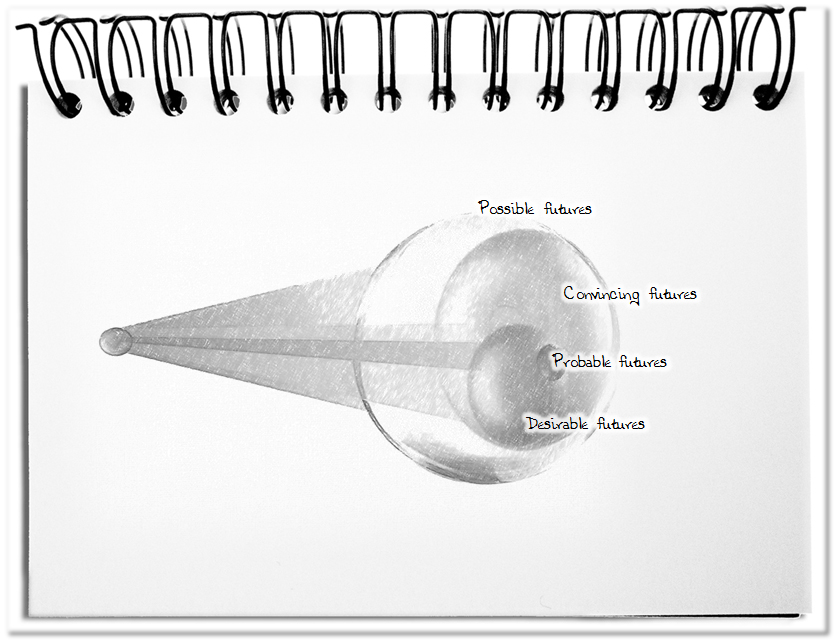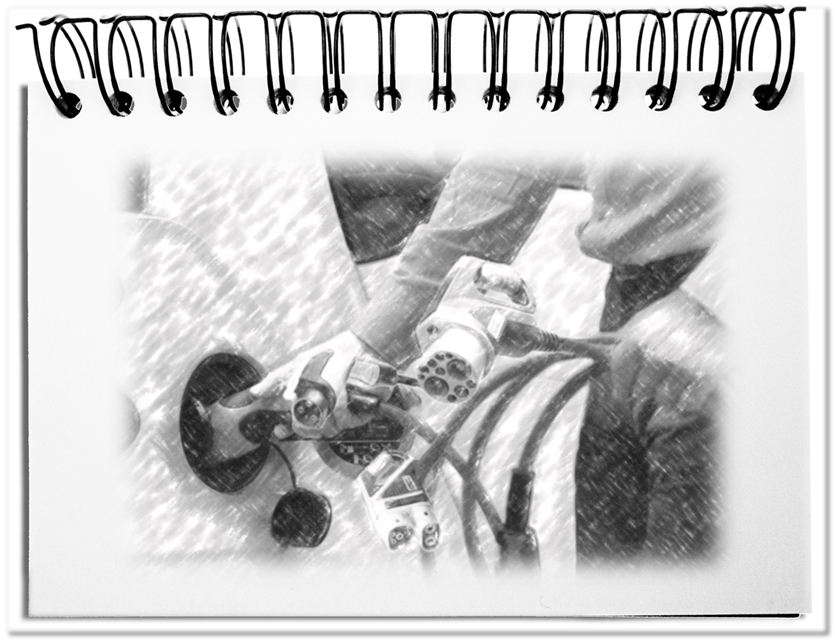The biggest hurdles in designing the future are the constraints that slow us down because we are not aware of them. What works is not determined by natural limits, but by our inability to imagine it. While climbing a mountain is a physical challenge that requires fitness, stamina and enthusiasm, building the future is a task that requires additionally imagination and creative drive. The space for possibilities is simply overwhelming.
Before looking at the design parameters, it is helpful to become aware of the design freedom in order to better exploit the available space.
- Possible futures
The outlooks become possible, if they are thinkable. Thus, for some aspects, the necessary resources for implementation might still be missing. That does not mean, however, that the flight to the moon was not yet imaginable for Jules Verne. Or the electronic surveillance state could not have been brought to our attention by George Orwell. Or that Bill Gates could not have imagined that all people could use a variety of computers in their household. What is still waiting for us requires only someone to express it. The possible futures are beyond our present experience. For this reason: anything goes – as long as we can express it. - Convincing futures
The forecasts are convincing, if they offer a credible picture of the future. This requires more justifications. Most of the things that determine our lives in this century already exist, e.g. 3D printing, humanoid robots, machine intelligence, networking. Even, if the 3D printing still seems relatively rough, you should remember the times of the first dot matrix printer, which could print nothing else than a black dot. Today, we print photos for a small amount of money, which can no longer be distinguished from an “analogue” photo. As soon as someone explains the context comprehensibly and consistently, a future will be convincing. Here you find the feasible options. - Desirable futures
The prospects are desirable, when they fit into one’s goals and requirements. At the same time, the intentions play a large part for desiring. In the interests of feasibility, these perspectives should be found in the area of convincing futures. In any case, the paths are different for different groups and individuals. Different beliefs and values lead to different wishes. In a value system that puts money in the center, the futures look different as in a value structure based on welfare or cooperation. The desire is fueled by the subconscious that leads to an instinctive yearning, sometimes to greed. In doing so, be aware what you wish for – it could become true. - Probable futures
It is likely that the future becomes a down-to-earth, realistic vision of the future, beyond all possibilities, convictions, and desires. Interests and beliefs should only play a minor role. The shifting of inhuman work to machines with more or less intelligence and, thus, the dissolution of today’s working environment has to be expected. And that despite this outlook no one provides yet an answer to the question of the future basis of existence for the people, this future is not less unlikely. These futures require an early concern about the implications of these new societal forms.
Beyond the present, there are still other futures, which no one foresees, and are beyond our expression. That is why we are looking at the present viewpoints on the future, which differ individually and do not automatically overlap with others. The conscious dealing with futures is easier when you are aware of these different spaces. In any case, the actual future must be actively designed. If you do not participate, you leave your own future to others.
Bottom line: Infinitely a lot is possible – and if not such infinitely, then at least infinitely minus one. The space where the future happens is largely determined by our imagination. The unimaginable remains unattainable. As we deal with what is thinkable, we distinguish between possible, convincing, desirable, and probable futures. These areas are so wide that we are overwhelmed by the alternatives. Nevertheless we are called to design our future, since even if anything goes and a lot is already feasible, not everything is really thought to the end in all areas. However, we should be aware of what we wish for, as we might not get rid of it later on.


